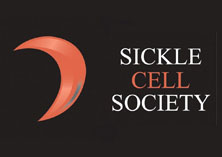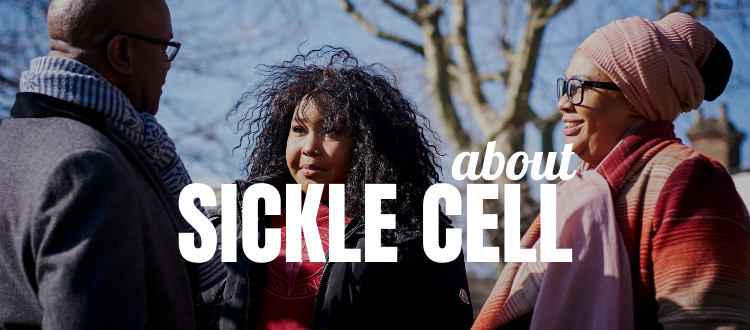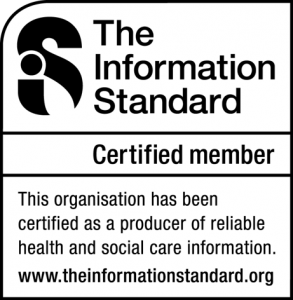
- Information and Support
- About Sickle Cell and Trait
- CAMPAIGNING
- Blood Donation
- Children’s Activities
- Clinical Trials and Research
- Coronavirus (COVID-19)
- Parvo Virus and Sickle Cell
- Hackney Engagement Project
- Helpline
- Heritage Project
- Mentoring
- Resources
- Screening Programme
- Self Over Sickle
- Support Groups and Local Services
- About Us
- Get Involved
- News & Contact
- Help and Advice
- DONATE NOW
About Sickle Cell
Home » About Sickle Cell

Coronavirus (COVID-19) & Sickle Cell Disorder
If you are looking for advice and guidance on coronavisus (COVID-19) and sickle cell, then please visit our guidance page: www.sicklecellsociety.org/coronavirus-and-scd/
Sickle cell is a disorder of the haemoglobin in the red blood cells.
Haemoglobin is the substance in red blood cells that is responsible for the colour of the cell and for carrying oxygen around the body.
People with sickle cell disorder are born with the condition, it is not contagious. It can only be inherited from both parents each having passed on the gene for sickle cell.
The main symptoms of sickle cell disorder are anaemia and episodes of severe pain. The pain occurs when the cells change shape after oxygen has been released. The red blood cells then stick together, causing blockages in the small blood vessels.
These painful episodes are referred to as sickle cell crisis. They are treated with strong painkillers such as morphine to control the pain.
People with sickle cell are at risk of complications stroke, acute chest syndrome, blindness, bone damage and priapism (a persistent, painful erection of the penis).
Over time people with sickle cell can experience damage to organs such as the liver, kidney, lungs, heart and spleen. Death can also result from complications of the disorder. Treatment of sickle cell mostly focuses on preventing and treating complications.
The only possible cure for the disorder is bone marrow transplant but this is only possible for a limited number of affected individuals who have a suitable donor. A medicine called Hydroxyurea, can significantly reduce the number of painful crises.
Did You Know?
1 SCD is inherited from both parents; sickle cell trait is inherited from one parent.
2 SCD can affect anyone, although it predominantly affects people from African and Caribbean backgrounds.
3 Approximately 1 in 79 babies born in the UK carry sickle cell trait.
4 Approximately 17,500 people in the UK have sickle cell disorder.
5 Almost 300 babies are born in the UK with sickle cell each year.
6 A simple blood test will tell whether you have sickle cell trait or the disorder
7 Children with SCD are at increased risk for stroke, the risk is highest between the ages of 2 and 16.
8 Episodes of pain may occur in sickle cell disorder and are generally referred to as a crisis
The Sickle Cell Trait
You are born with sickle cell trait. It is inherited when only one of your parents has passed on the sickle gene, and will never develop into sickle cell disorder.
You do not have symptoms from sickle cell trait, so it is a good idea to have a blood test to see if you have sickle cell trait.
If you have the trait, the majority of red cells in the blood are normal round shaped cells. Some sickle shaped cells may be present under certain conditions.
Sickle cell trait is found in 1 in 4 West Africans and 1 in 10 Afro-Caribbeans, and is also found in people who originate from the Mediterranean, Asia and the Middle East. It is less common in white European’s, although with the ever growing diversity of the population this will change.
Most people who have sickle cell trait are healthy. However, anaesthetics can cause problems. If you have sickle cell trait Always notify your dentist or doctor before treatment commences to be on the safe side.
There is a small chance that you may experience pain at high altitudes (generally above 10,000 feet), including long-haul flying in unpressurised planes and mountain climbing. It is important you say you have sickle cell trait before undertaking such activities as you may need to breathe oxygen. Extreme exercise may also precipitate problems and if you are a professional athlete you should have a training programme that takes account of this.
The trait is not an illness, but if you are planning to have children, then certain factors have to be considered.
If your partner does not have sickle cell trait, then any children you have will not have sickle cell disorder, but they could have the trait (50% chance).
If you and your partner both have the trait, there is a 25% chance that any child conceived may have sickle cell disorder and 50% chance they will have the trait.
What to do next?
If you want to know your sickle cell status you can ask your GP for a blood test.
In some parts of the country there are also local sickle cell centres that can arrange a blood test for you.
You may have been screened for sickle cell disease. Screening is offered .
To all newborn babies as part of the newborn bloodspot (heelprick test) when your baby is five days old. The key reason for offering newborn screening for sickle cell disease is because babies with sickle cell disease are vulnerable to serious infections. By identifying babies early in life , they can be prescribed penicillin and be referred for specialist care, so that they stay healthy.
Newborn screening also detects babies who have the trait (also known as a carrier) for sickle cell disease.
To all pregnant women early in pregnancy (ideally by ten weeks) . Antenatal screening identifies parents to be who have the trait (also known as a carrier). If the mother is identified with the trait, the baby’s father is offered a screening test.
Managing Sickle Cell
There are several treatments available to help manage sickle cell (HbSS) and prevent or treat its symptoms. Your GP, hospital doctor or specialist nurse will recommend appropriate treatments for you or your child. Their recommendations may include:
Antibiotics
Penicillin (or erythromycin in the case of allergy) is prescribed to all infants from the age of 3 months to prevent overwhelming pneumococcal sepsis. [1,2] Other infections, for example chest infection or osteomyelitis (infection of the bone) are treated with the appropriate antibiotic.
Immunisations
All infants should receive immunisations according to the universal schedule. In addition, those with sickle cell disease should receive extra vaccinations against Meningitis (Men ACWY) and Pneumococcus (PPV). The latter is given 5 yearly throughout life.
Painkillers
Mild to moderate painful episodes may be managed with over-the-counter painkillers like ibuprofen and paracetamol which should be taken regularly until the episode is over. It is sometimes necessary to go to hospital for severe pain as stronger painkillers such as opiates may be needed.
Blood Transfusions
Blood transfusions are used in the management of sickle cell disease in different ways. In the case of a sudden drop in haemoglobin, such as acute splenic sequestration or aplasia due to parvovirus infection, a simple top-up of non-sickle cell blood is given. In acute emergencies, such as stroke or acute chest syndrome, an exchange blood transfusion is needed to reduce the amount of sickle cells in the blood. Regular, usually monthly, blood transfusions are indicated in the long-term management of stroke or if there is no response to other medications such as hydroxycarbamide (see below). Blood transfusions come from donated blood, which is collected, carefully tested for infections such as hepatitis and HIV, and then closely matched to the recipient to prevent reactions.
Hydroxycarbamide
Also known as hydroxyurea, hydroxycarbamide increases the amount of foetal haemoglobin (HbF) in the blood and reduces the frequency of painful episodes and acute chest syndrome.[3] It is important to remember that hydroxycarbamide must be taken every day for it to work well and regular blood tests are necessary both to monitor benefits and possible side effects. It is now recommended that hydroxycarbamide should be discussed with parents of all children with sickle cell disease from the age of 9 months in order to prevent the onset of long-term complications., improve quality of life and maintain healthy growth.[4] However, while conversations should start from the age of 9 months, hydroxycarbamide is only licensed for use in children over the age of 2 years.
Early Recognition and Follow Up
The mortality in childhood sickle cell disease has fallen from 10% in the 1980’s to <1% now. This is almost entirely due to new-born screening, early registration into care and penicillin prophylaxis. Advice and support to parents is also crucial in insuring early recognition of symptoms and good access to medical care. The morbidity from stroke has reduced significantly with the introduction of routine transcranial Doppler screening from the age of 2 years. The adoption of the British Society of Haematology guideline to discuss with parents the early use of hydroxycarbamide and starting treatment from the age of 2 years, should improve quality of life further and prevent long- term complications before they develop.
For further information about the treatment and management of sickle cell, speak to a healthcare professional.
The following standards and guidelines are also available
Standards for the Clinical care of Adults with Sickle cell disease in the UK https://www.sicklecellsociety.org/wp-content/uploads/2018/05/Standards-for-the-Clinical-Care-of-Adults-with-Sickle-Cell-in-the-UK-2018.pdf
Sickle Cell Disease in Childhood: Standards and recommendations for Clinical Care https://www.sicklecellsociety.org/wp-content/uploads/2019/11/SCD-in-Childhood_Final-version-1.pdf
References
- Prevention of infection 1 Oligbu G, Collins S, Sheppard C, et al. Risk of invasive pneumococcal disease in children with sickle cell disease in England: a national observational cohort study, 2010–2015. Arch Dis Child 2018; 103: 643–7.
- Gaston MH, Verter JI, Woods G, et al. Prophylaxis with oral penicillin in children with sickle cell anemia. N Engl J Med 1986; 314: 1593–9.
- Rees DC. The rationale for using hydroxycarbamide in the treatment of sickle cell disease. Haematologica. 2011 Apr;96(4):488-91.
- Qureshi A, Kaya B, Pancham S, et al. Guidelines for the use of hydroxycarbamide in children and adults with sickle cell disease: A British Society for Haematology Guideline. Br J Haematol 2018; 181: 460–75.



